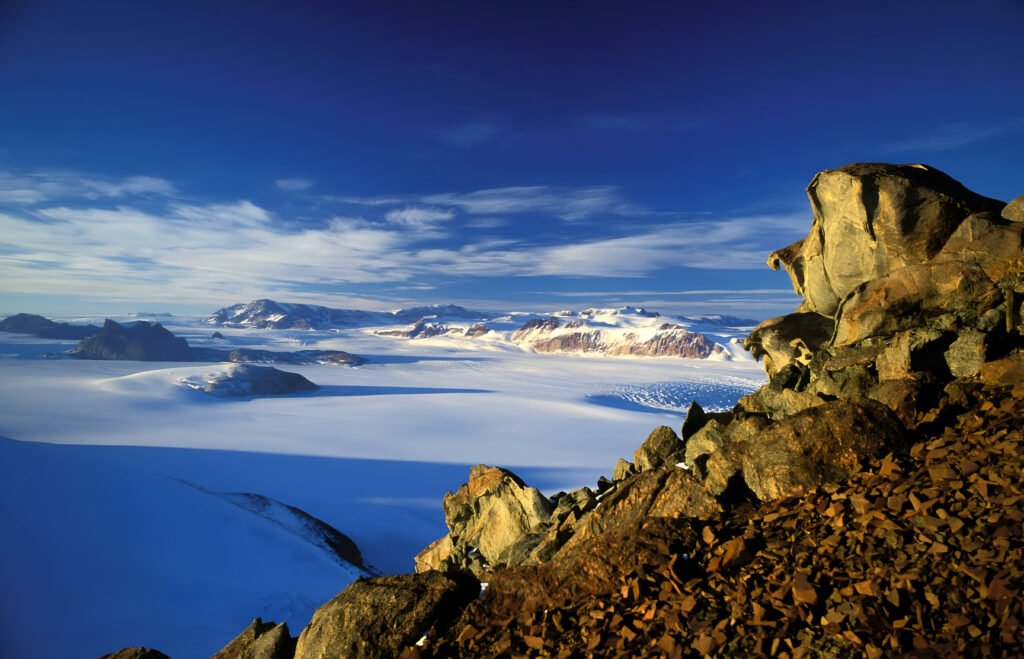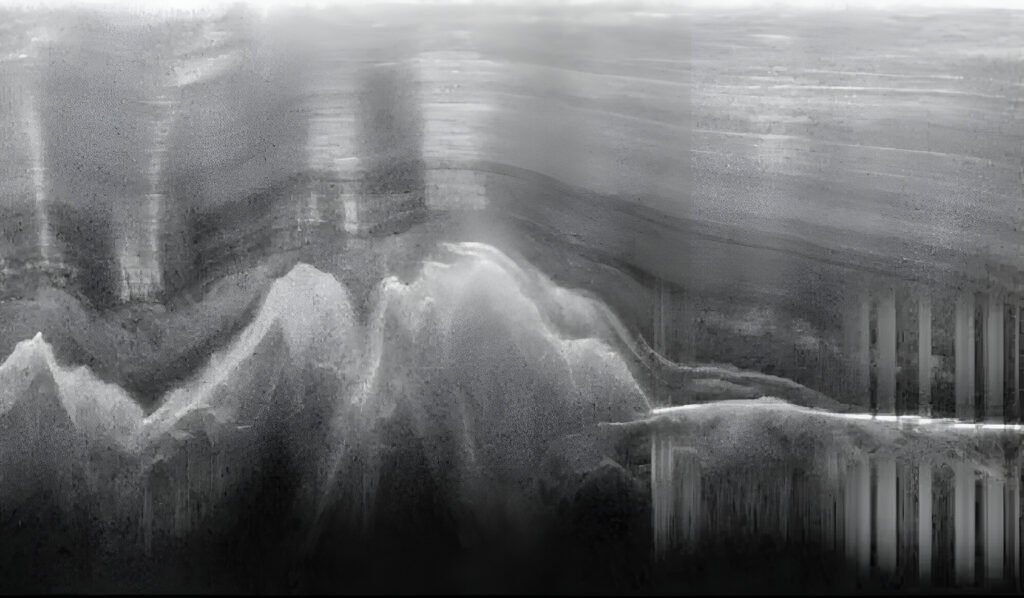
Have you ever asked yourself what is hidden behind the frozen mask of Antarctica? Underneath the continent’s enormous, icy surface is a world that few have envisioned, a world sculpted with craggy mountains, deep valleys, and vast plains. One of the most surprising of these concealed features is a gigantic, entirely submerged mountain range in the center of East Antarctica: the Gamburtsev Subglacial Mountains.
In contrast with the high-lying Transantarctic Mountains that rise above the ice, the Gamburtsev range is entirely buried underneath a few kilometers of ice. Comparable in size and shape to the European Alps, these mountains remain one of the most mysterious and least understood geological formations on the planet. Their existence raises a compelling question: How did such an immense range form and remain intact in the center of a continent that’s been tectonically quiet for millions of years?
A Concealed World Revealed
The Gamburtsev Mountains’ story started in 1958, with a Soviet expedition that used seismic methods to look underneath Antarctica’s dense ice sheet. What they discovered was surprising: a range of alpine mountains of stunning proportions, submerged deep beneath the highest point of the East Antarctic Ice Sheet. Ever since, the scientific community has been interested in how the range formed and survived.
As opposed to most mountain ranges that grow as a result of the continuing collision of tectonic plates, like the Himalayas, which continue to grow today, the Gamburtsev Mountains are located in an area of Antarctica that has been geologically stable for hundreds of millions of years. How, then, did this buried mountain belt form?
Piecing Together an Ancient Puzzle
A recent study in Earth and Planetary Science Letters presents a convincing solution. Researchers now think that the Gamburtsev Mountains were created more than 500 million years ago, when the ancient supercontinent Gondwana was being built. The massive continent, which comprised modern Africa, South America, India, Australia, and Antarctica, was created through the collision of multiple older continents over 650 million years ago.
The coming together of these continents did not only form a new continent; it also created enormous geological turmoil deep inside the Earth’s crust. The collision caused the rising movement of hot, partially molten rock, which made the crust thicker and created colossal mountains.

But then something else happens that is equally intriguing. As the mountains became taller and heavier, the crust below them started to buckle under its own weight. This initiated a process known as gravitational spreading, in which hot rocks deep underground began to flow sideways, much like toothpaste being squeezed from a tube. This partially flattened the range but left behind a deep and stable “root” embedded in the Earth’s mantle, preserving the mountain range for millennia to come.
Unlocking the Timeline with Crystal Clues
To get at precisely when exactly these events did take place, scientists went searching for some of Earth’s tiniest and most consistent timekeepers: zircon crystals. Embedded within ancient river sandstones in the Prince Charles Mountains, several hundred kilometers distant from the Gamburtsev range, those tiny mineral crystals provide an extremely insightful view of geological history.
Zircons have tiny amounts of uranium, which decays at a constant rate, serving as a natural clock. By dating the crystals, scientists revealed a chronology for the mountain-building process. The Gamburtsev Mountains are thought to have started rising about 650 million years ago, peaked about 580 million years ago, and underwent extensive crustal melting and collapse that ceased about 500 million years ago.
A Geological Time Capsule
Most mountain chains created by continental collisions are slowly worn away or changed by subsequent tectonic activity. The Gamburtsev Mountains, however, are preserved in their original state, trapped under a deep layer of ice that protects them from weathering and erosion. Consequently, they provide one of the most pristine examples of an ancient mountain belt on the planet.
Although direct access to the range is still a daunting task with the extreme ice cover, this new research assists scientists in refining models of Earth’s tectonic evolution and provides useful hints for future exploration. Promising leads have already been generated. Fieldwork in the vicinity of East Antarctica’s Denman Glacier recently revealed rocks that could be connected to the hidden range. Additional study of these samples could assist in reconstructing the deeper structure of the continent’s interior.
Antarctica: A Frontier of Discovery
The fact and continued investigation of the Gamburtsev Subglacial Mountains serve to remind us that in the era of satellites and international exploration, our planet remains host to massive, unseen secrets. Underneath the ice in Antarctica is a buried record of the deep-time history of Earth, one only just starting to be read by scientists.
As technology advances and research continues, the frozen heart of Antarctica may reveal more surprises, offering insights not just into Earth’s past, but also its future. For now, the Gamburtsev Mountains remain a silent monument to ancient forces, preserved in ice, waiting patiently to tell their story.









